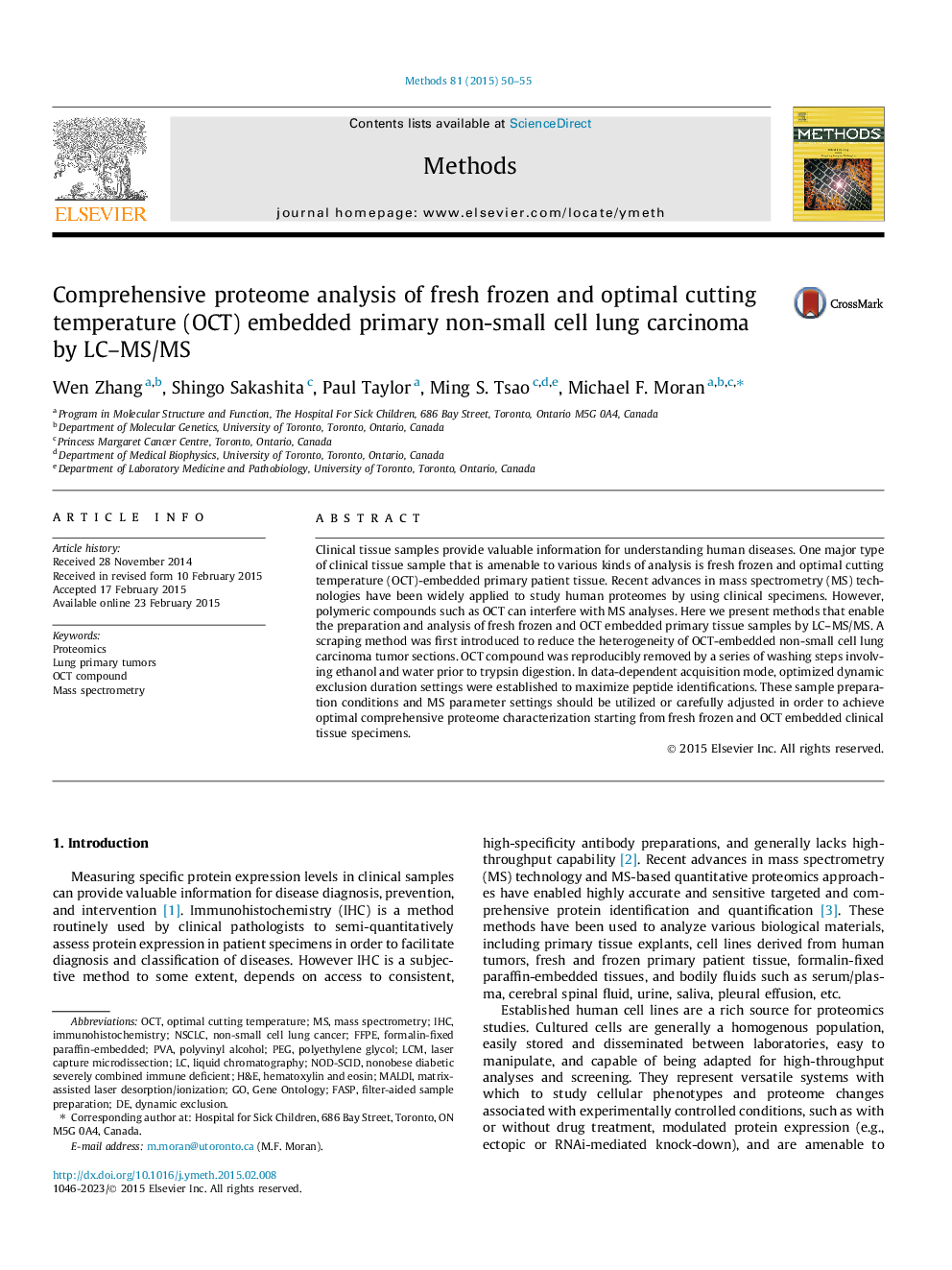| Article ID | Journal | Published Year | Pages | File Type |
|---|---|---|---|---|
| 1993283 | Methods | 2015 | 6 Pages |
•A fast tissue-scraping method is described to enrich unstained non-small cell lung carcinoma primary tumor tissue.•An OCT-removal approach is introduced to prepare tissues for LC–MS/MS.•Optimization of dynamic exclusion duration maximizes peptide identifications.
Clinical tissue samples provide valuable information for understanding human diseases. One major type of clinical tissue sample that is amenable to various kinds of analysis is fresh frozen and optimal cutting temperature (OCT)-embedded primary patient tissue. Recent advances in mass spectrometry (MS) technologies have been widely applied to study human proteomes by using clinical specimens. However, polymeric compounds such as OCT can interfere with MS analyses. Here we present methods that enable the preparation and analysis of fresh frozen and OCT embedded primary tissue samples by LC–MS/MS. A scraping method was first introduced to reduce the heterogeneity of OCT-embedded non-small cell lung carcinoma tumor sections. OCT compound was reproducibly removed by a series of washing steps involving ethanol and water prior to trypsin digestion. In data-dependent acquisition mode, optimized dynamic exclusion duration settings were established to maximize peptide identifications. These sample preparation conditions and MS parameter settings should be utilized or carefully adjusted in order to achieve optimal comprehensive proteome characterization starting from fresh frozen and OCT embedded clinical tissue specimens.
